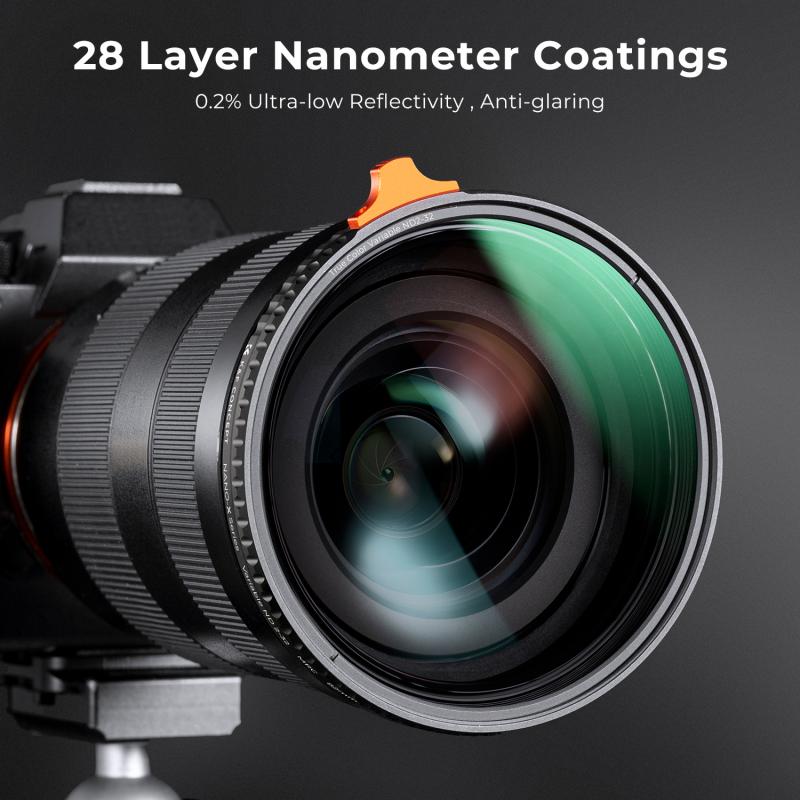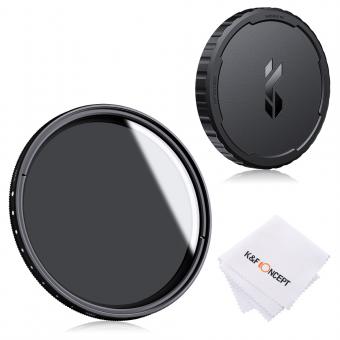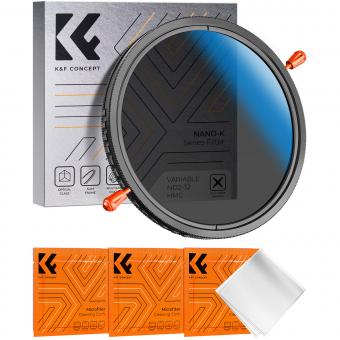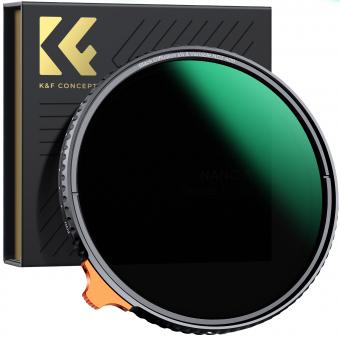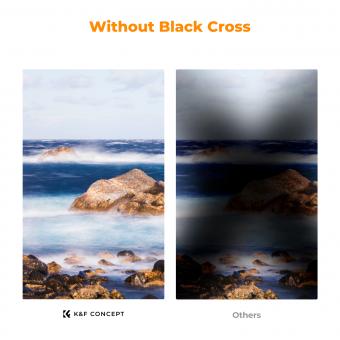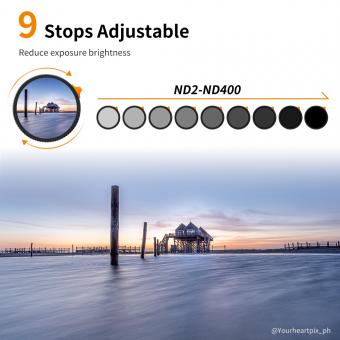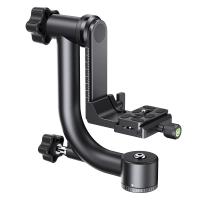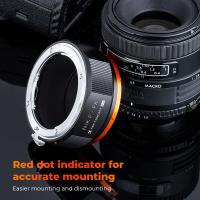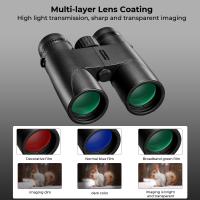How Variable Nd Filter Works ?
A variable ND filter is a type of camera filter that allows you to adjust the amount of light entering the lens by rotating the filter. It consists of two polarizing filters that are stacked together and can be rotated relative to each other. As you rotate the filter, the amount of light passing through the filters is adjusted, resulting in a variable level of light reduction.
The first polarizing filter blocks light waves that are vibrating in a certain direction, while the second filter allows only light waves vibrating in a specific direction to pass through. By rotating the filters, you can control the alignment of the polarizing filters and therefore control the amount of light that is transmitted through the filter.
Variable ND filters are commonly used in photography and videography to achieve a desired exposure in situations where there is too much light. They are particularly useful in situations where you want to use a wide aperture or slow shutter speed in bright conditions, such as capturing motion blur in daylight or achieving a shallow depth of field in bright sunlight.
1、 Definition and Purpose of Variable ND Filters
A variable ND (Neutral Density) filter is a versatile tool used in photography and videography to control the amount of light entering the camera lens. It consists of two polarizing filters that can be rotated relative to each other, allowing for adjustable light reduction.
The purpose of a variable ND filter is to achieve a desired exposure in situations where there is too much light. By reducing the amount of light entering the lens, it enables photographers and videographers to use wider apertures, slower shutter speeds, or both, without overexposing the image. This is particularly useful in bright outdoor environments or when shooting long exposures in daylight.
Variable ND filters offer a range of light reduction options, typically measured in stops. By rotating the filter, the photographer can adjust the amount of light reduction from minimum to maximum, providing greater flexibility in different lighting conditions. This eliminates the need to carry multiple fixed ND filters of different densities, making variable ND filters a convenient and cost-effective solution.
The latest point of view on variable ND filters is that they have become increasingly popular among photographers and videographers due to their convenience and versatility. They allow for quick adjustments in rapidly changing lighting conditions, such as during outdoor shoots or when shooting moving subjects. Additionally, variable ND filters are often used in combination with other creative techniques, such as long exposures to capture motion blur or shallow depth of field for artistic effects.
However, it is important to note that variable ND filters may introduce certain optical issues, such as color shifts or image degradation at extreme light reduction settings. Therefore, it is recommended to invest in high-quality filters from reputable manufacturers to minimize these potential drawbacks.
In conclusion, variable ND filters are essential tools for controlling light in photography and videography. They provide flexibility and convenience, allowing photographers and videographers to achieve desired exposures in various lighting conditions.
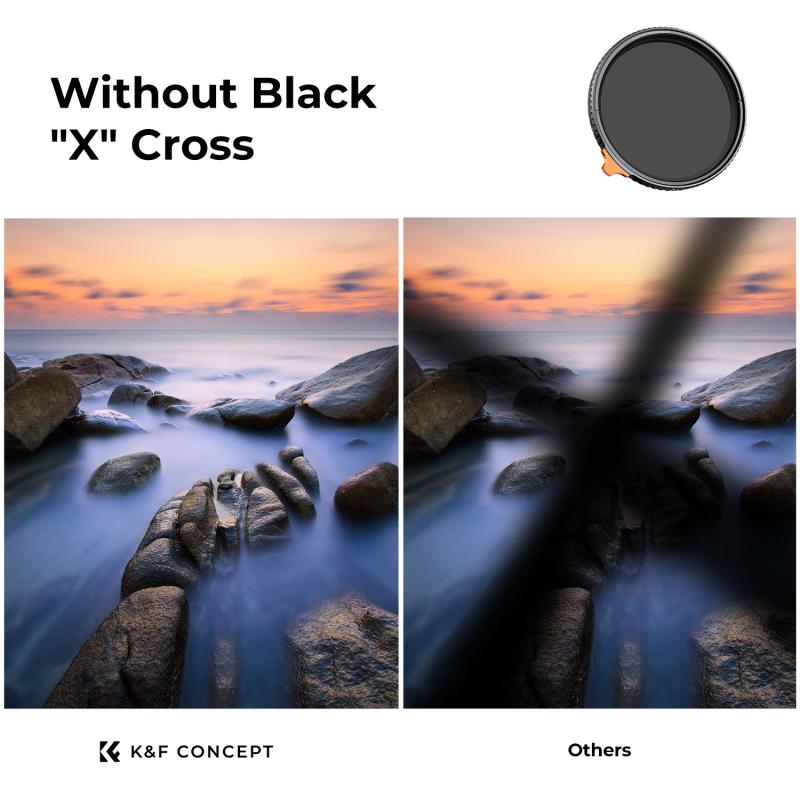
2、 Construction and Mechanism of Variable ND Filters
Variable ND filters are essential tools for photographers and videographers as they allow for greater control over exposure in various lighting conditions. These filters work by reducing the amount of light that enters the camera lens, thus allowing for longer exposures or wider apertures without overexposing the image.
The construction and mechanism of variable ND filters involve two polarizing filters that are stacked together. These filters can be rotated relative to each other, which changes the amount of light that is transmitted through the filter. When the filters are aligned, they allow maximum light transmission, and as they are rotated, they start to block more and more light.
The first polarizing filter, known as the polarizer, is fixed and attached to the lens. It is responsible for reducing glare and reflections, as well as enhancing color saturation. The second polarizing filter, known as the analyzer, is the one that can be rotated. As it rotates, it changes the angle at which light passes through, effectively reducing the amount of light that reaches the camera sensor.
Variable ND filters typically have a rotating ring that allows for easy adjustment of the analyzer filter. This ring is marked with different stops or densities, indicating the amount of light reduction achieved at each setting. By rotating the ring, photographers can precisely control the amount of light entering the lens, allowing for creative effects such as motion blur or shallow depth of field.
It is important to note that variable ND filters can introduce certain issues, such as color shifts or vignetting, especially at extreme settings. However, advancements in filter technology have addressed many of these concerns, and newer models offer improved performance and image quality.
In conclusion, variable ND filters are constructed using two polarizing filters that can be rotated relative to each other. This mechanism allows for precise control over the amount of light entering the lens, enabling photographers and videographers to achieve desired exposure settings in various lighting conditions.
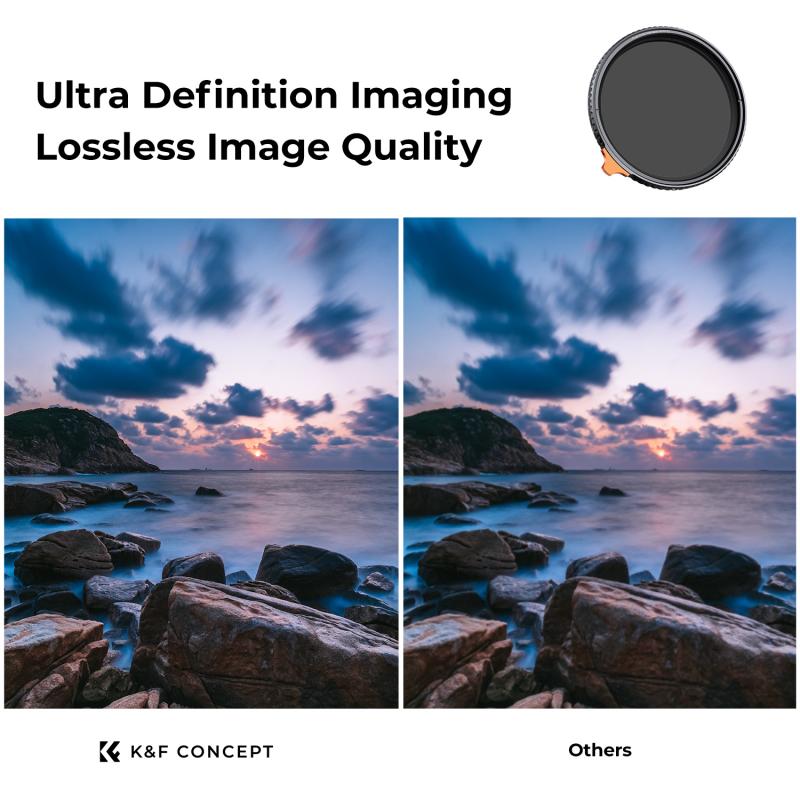
3、 Adjusting Light Reduction with Variable ND Filters
A variable ND (Neutral Density) filter is a versatile tool used in photography and videography to adjust the amount of light entering the camera lens. It consists of two polarizing filters that can be rotated relative to each other, allowing for variable light reduction.
The primary function of an ND filter is to reduce the amount of light entering the lens without affecting the color or quality of the image. This is particularly useful in situations where there is too much light, such as when shooting in bright sunlight or when using a wide aperture in low-light conditions. By reducing the amount of light, a variable ND filter enables the photographer or videographer to use slower shutter speeds or wider apertures, resulting in creative effects like motion blur or shallow depth of field.
The way a variable ND filter works is by rotating the front and rear polarizing filters. When the filters are aligned, they allow maximum light transmission, and as they are rotated relative to each other, they progressively block more light. This rotation changes the polarization of the light waves, effectively reducing the intensity of the light entering the lens.
One advantage of a variable ND filter is its flexibility. Unlike fixed ND filters, which offer a specific light reduction value, a variable ND filter allows for a range of light reduction options. This versatility makes it a popular choice among photographers and videographers who need to quickly adapt to changing lighting conditions.
It is worth noting that variable ND filters have improved over the years, with advancements in technology reducing issues like color cast and image quality degradation. However, it is still important to invest in a high-quality filter to ensure optimal performance and minimal impact on image quality.
In conclusion, a variable ND filter works by rotating two polarizing filters to adjust the amount of light entering the lens. It provides flexibility in light reduction options and is a valuable tool for photographers and videographers looking to control exposure and achieve creative effects.
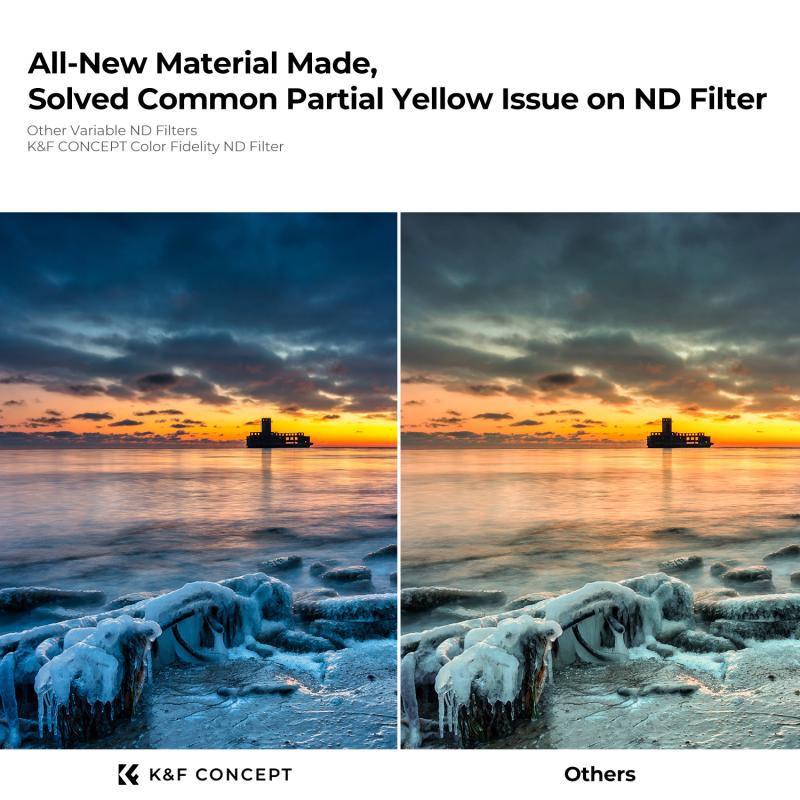
4、 Benefits and Applications of Variable ND Filters
A variable ND (Neutral Density) filter is a versatile tool used in photography and videography to control the amount of light entering the camera lens. It consists of two polarizing filters that can be rotated relative to each other, allowing for adjustable light reduction.
The primary benefit of a variable ND filter is its ability to extend exposure times, even in bright conditions. By reducing the amount of light entering the lens, it enables longer shutter speeds, which are essential for capturing motion blur or creating smooth water effects. This is particularly useful in landscape photography, where photographers often aim to capture the movement of clouds or water.
Another advantage of variable ND filters is their ability to control depth of field. By reducing the amount of light, they allow for wider apertures, resulting in a shallower depth of field. This is beneficial in portrait photography, as it helps to isolate the subject from the background, creating a pleasing bokeh effect.
Variable ND filters also provide flexibility in challenging lighting conditions. They allow photographers to maintain a consistent exposure across a scene, even when there are significant variations in brightness. This is particularly useful in situations such as shooting in bright sunlight or capturing scenes with high contrast.
In recent years, variable ND filters have gained popularity due to advancements in technology. The latest filters offer improved image quality, with minimal color cast and loss of sharpness. They also provide a wide range of light reduction, allowing for precise control over exposure.
Overall, variable ND filters are essential tools for photographers and videographers, offering the ability to control light and create stunning visual effects. With their versatility and advancements in technology, they continue to be widely used in various applications, from landscape and portrait photography to cinematography.
